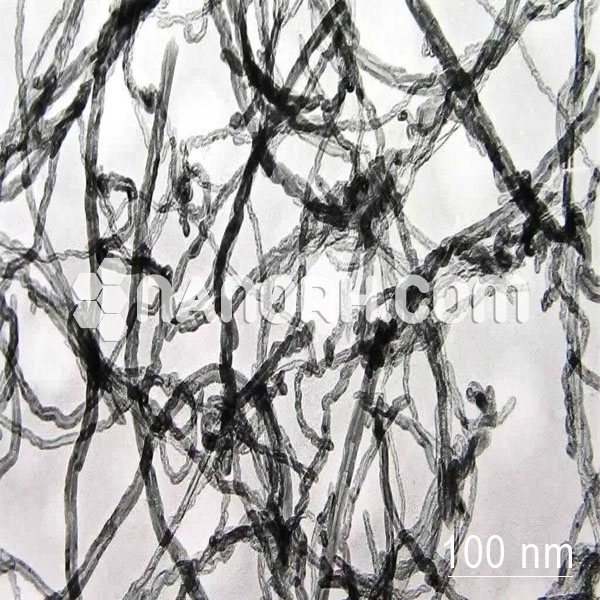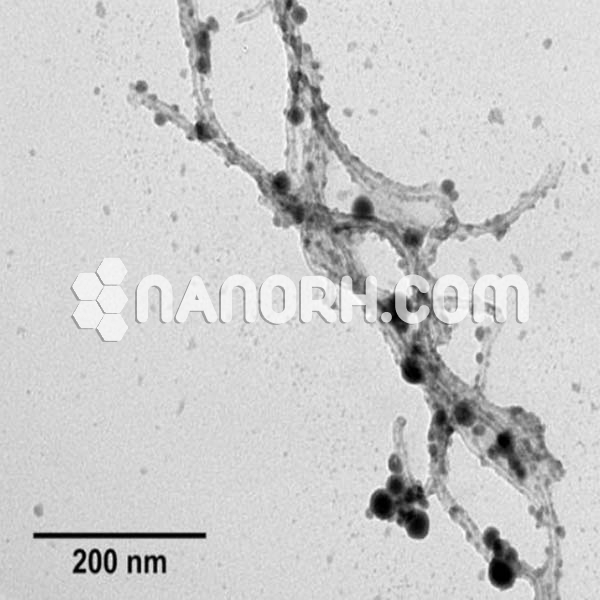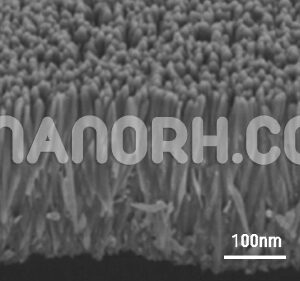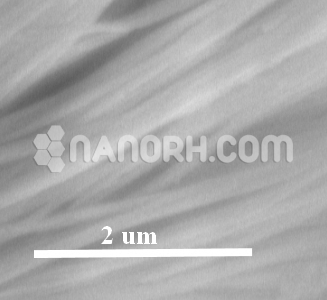Multi-Walled Carbon Nanotubes
Multi-Walled Carbon Nanotubes (MWNTs) are cylindrical coaxial nanoscale structures of graphitic carbon grown via various chemical vapor deposition (CVD) techniques. Multi-walled carbon nanotubes consist of concentric single-walled carbon nanotubes (SWNTs), or rolled layers of graphene with unique electronic and optical properties..
| Multi-Walled Carbon Nanotubes | |
| Product No | NRE-14014 |
| CAS No. | 308068-56-6 |
| Formula | C |
| Average diameter | 30-50nm |
| Average Length | up to 200µm |
| Purity | 99.9% |
| Molecular Weight | 12.01 g/mol |
| Density | 1.7-2.1g/cm3 |
| Melting Point | 3825 °C |
| Boiling Point | 4,827 °C |
Multi-Walled Carbon Nanotubes (MWNTs) are cylindrical coaxial nanoscale structures of graphitic carbon grown via various chemical vapor deposition (CVD) techniques. These nanotubes consist of concentric single-walled carbon nanotubes (SWNTs), or rolled layers of graphene with unique electronic and optical properties. Applications for carbon nanotubes based include electronics, semiconductors, energy and hydrogen storage, composites, sensors, and medical technologies. These multi walled carbon nanotubes are generally immediately available in a variety of lengths and purities. Multi-walled carbon nanotube arrays on silicon wafers are also available. Typical and custom packaging is available. Additional technical, research, and safety (MSDS) information is available as is a Reference Calculator for converting relevant units of measurement.
Applications
Nanocomposites and Materials Engineering
Reinforcement in Polymers and Composites: MWNTs are widely used as reinforcement materials in polymeric nanocomposites. Their high aspect ratio, strength, and conductivity improve the mechanical, electrical, and thermal properties of the base polymers. MWNTs are incorporated into materials for applications such as lightweight structural components, automotive parts, aerospace materials, and protective coatings.
Conductive Polymers: Due to their high electrical conductivity, MWNTs are often used to improve the electrical properties of conductive polymers used in applications such as antistatic coatings, electromagnetic shielding, and flexible electronics.
Thermal Management: MWNTs have excellent thermal conductivity and are used in thermal management applications to dissipate heat in devices like electronics, batteries, and LEDs. Their use in thermal interface materials can enhance heat dissipation, which is crucial in devices that generate significant heat.
Energy Storage and Conversion
Supercapacitors: MWNTs are utilized in the development of supercapacitors, which are energy storage devices that deliver high power and fast charge/discharge cycles. The high surface area of MWNTs provides more active sites for charge storage, while their conductivity ensures efficient charge transport. MWNTs are often used as electrode materials in both electric double-layer capacitors (EDLCs) and pseudocapacitors.
Batteries: MWNTs are used in lithium-ion batteries (LIBs) and sodium-ion batteries to improve the capacity, cycle life, and rate capability of the batteries. MWNTs serve as anode materials or conductive additives to enhance performance.




